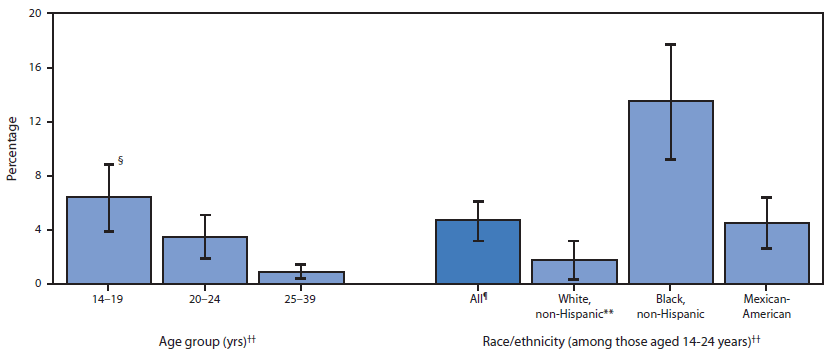Chlamydia trachomatis, an obligate intracellular human pathogen, is one of four bacterial species in the genus Chlamydia. C. trachomatis is a gram-negative bacterium, therefore its cell wall components retain the counter-stain safranin and appear pink under a light microscope. It can appear as either coccoid or rod shape.
The inclusion bodies of Chlamydia trachomatis were first described in 1942; the Chlamydia trachomatis agent was first cultured in the yolk sacs of eggs by Professor Feifan Tang et al in 1957.
C. trachomatis includes three human biovars:
- serovars Ab, B, Ba, or C â€" cause trachoma: infection of the eyes, which can lead to blindness
- serovars D-K â€" cause urethritis, pelvic inflammatory disease, ectopic pregnancy, neonatal pneumonia, and neonatal conjunctivitis
- serovars L1, L2 and L3 â€" lymphogranuloma venereum (LGV).
Many, but not all, C. trachomatis strains have an extrachromosomal plasmid.
Chlamydia can exchange DNA between its different strains, thus the evolution of new strains is common.
Identification

Chlamydia species are readily identified and distinguished from other Chlamydia species using DNA-based tests.
Most strains of C. trachomatis are recognized by monoclonal antibodies (mAbs) to epitopes in the VS4 region of MOMP. However, these mAbs may also cross-react with two other Chlamydia species, C. suis and C. muridarum.
Life-cycle

Clinical significance
C. trachomatis is an obligate intracellular pathogen (i.e., the bacterium lives within human cells) and can cause numerous disease states in both men and women. Both sexes can display urethritis, proctitis (rectal disease and bleeding), trachoma, and infertility. The bacterium can cause prostatitis and epididymitis in men. In women, cervicitis, pelvic inflammatory disease (PID), ectopic pregnancy, and acute or chronic pelvic pain are frequent complications. Neonates born to infected mothers are also susceptible to infections of the eye (conjunctivitis) and lung.
C. trachomatis is the single most important infectious agent associated with blindness (trachoma); approximately 84 million worldwide suffer C. trachomatis eye infections and 8 million are blinded as a result of the infection.
Treatment
C. trachomatis may be treated with any of several bacteriostatic antibiotics: macrolides (azithromycin, clarithromycin, erythromycin, etc) or tetracyclines (doxycycline, tetracycline, etc).
Laboratory tests

- Nucleic acid amplification tests (NAAT). These tests find the genetic material (DNA) of Chlamydia bacteria. These tests are the most sensitive tests available, meaning that they are very accurate and that they are very unlikely to have false-negative test results. A polymerase chain reaction (PCR) test is an example of a nucleic acid amplification test. This test can also be done on a urine sample.
- Nucleic acid hybridization tests (DNA probe test). A probe test also finds chlamydia DNA. A probe test is very accurate but is not as sensitive as nucleic acid amplification tests.
- Enzyme-linked immunosorbent assay (ELISA, EIA). This quick test finds substances (Chlamydia antigens) that trigger the immune system to fight Chlamydia infection.
- Direct fluorescent antibody test (DFA). This quick test also finds Chlamydia antigens.
- Chlamydia cell culture. A test in which the suspected chlamydia sample is grown in a vial of cells. The pathogen infects the cells and after a set incubation time (48 hours) the vials are stained and viewed on a fluorescent light microscope. Cell culture is more expensive and takes longer (two days) than the other tests. The culture must be grown in a laboratory.







This comment has been removed by the author.
ReplyDeleteThis comment has been removed by the author.
ReplyDeleteYou have made some really good points here and it is like get quick results on chlamydia. I looked on the web for more information about the issue and found most accurate information here.
ReplyDeleteThank you very much for such a helpful writing.